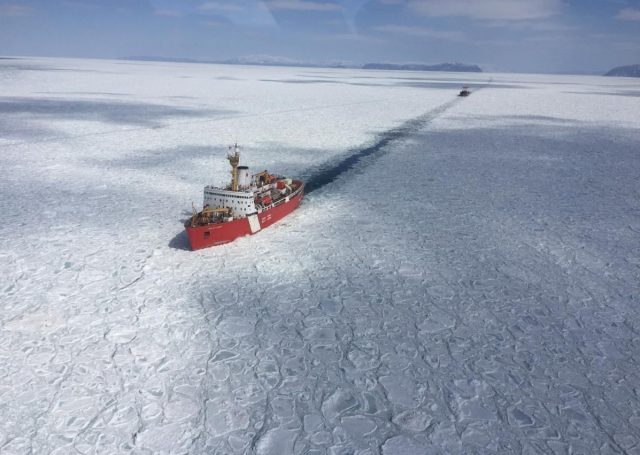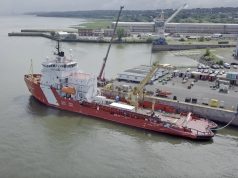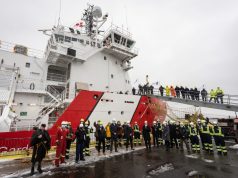The Canadian government announced on Thursday it selected Seaspan Shipyards and Davie Shipbuilding to design and build two new polar icebreakers that would be the flagships of the Canadian Coast Guard’s icebreaking fleet.
Both new icebreakers will have capacity and ability beyond that of Canada’s current largest icebreaker, the CCGS Louis S. St-Laurent.
This procurement approach will ensure at least one polar icebreaker is delivered by 2030 when the CCGS Louis S. St-Laurent is expected to retire from service. Precise timing of icebreaker delivery will be determined once shipyard agreements are in place, the government said.
Early estimates are that the construction of these ships will generate approximately 300 jobs per vessel at the shipyards, and 2,500 jobs across the marine supply chain.
With their enhanced capabilities, these larger, more powerful polar icebreakers will enable the coast guard to conduct year-round operations in Canada’s Arctic. Their greater endurance will ensure they can operate at higher latitudes for longer periods, and will allow the fleet to better support indigenous peoples and northerners, strengthen Arctic sovereignty, advance high Arctic science, and better respond to maritime emergencies.
The new icebreakers will be around 150 meters long, have a beam of 28 meters, and a top speed of over 18 knots. They will provide accommodation for up to 100 crew and personnel, and have a range of approximately 30,000 nautical miles.
Seaspan said it would work with Genoa Design International in Newfoundland and Labrador and Heddle Shipyards in Ontario, along with hundreds of small and medium Canadian companies on delivering the ship.
Canada’s Coast Guard currently has 18 icebreakers of varying sizes and capability, which is the second largest icebreaking fleet in the world. The largest is the CCGS Louis S. St-Laurent, which will continue to operate through the next decade.
In 2019, the government announced an investment for the renewal of the Canadian Coast Guard fleet with funding of C$15.7 billion for up to 18 new large ships, additional funding for up to six program icebreakers, as well as investments of over $2 billion in vessel life extension, refit, and maintenance work for the existing fleet.
To date, three Offshore Fisheries Science Vessels (OFSV) and 18 small vessels have been delivered to the Canadian Coast Guard under the National Shipbuilding Strategy (NSS) along with two refitted Medium interim icebreakers.
In 2019, the Government of Canada announced its intention to add a third Canadian shipyard as a partner under the NSS, and launched the competitive process to select the new shipyard.
Following an invitation to qualify (ITQ), Davie Shipbuilding of Lévis, Quebec, is the only shipyard that pre-qualified to become the third strategic partner under the strategy. Davie Shipbuilding moved to the next stage in the selection process, the request for proposal and evaluation stage.
Subject to Davie’s successful completion of the qualification process, the Canadian government plans to begin negotiations for an umbrella agreement which is expected to be in place in late 2021.



























